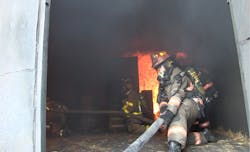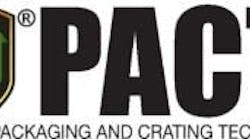While knowledge makes one a better person, it is the certifications, credentials and licenses that can advance a career.
This has never been truer than in today’s fire and emergency services. Whether volunteer or career, fire and emergency services personnel are competing more than ever to fill leadership and specialist positions—and the competition is usually comprised of highly educated and well trained individuals.
There is no doubt that training and education play a major role in helping individuals prepare for and sustain a career in emergency services. From science to math skills, education provides the core knowledge and theory to validate operational strategies. The issues facing emergency services personnel grow more and more complex, from transitional attack to mass-casualty events. Core training may no longer be enough to help personnel adapt to these changes in emergency services.
Think of the traditional knowledge, skills and abilities as the building blocks for validating competency and mastery.
- Knowledge is the theory to be learned in an educational environment, such as through courses at a university.
- Skills are the application of knowledge in a training environment, where one directly applies theories that were learned in an academic setting.
- Abilities are the demonstrated capabilities showing mastery application of knowledge and skills in multiple settings, which validates expertise.
Understanding the purpose and need for each building block makes it clear why it is so important to have each—education, training and experience. Together, they help emergency service professionals validate their competency and expertise in dealing with emergency and disasters in multiple settings.
Your educational needs will change
Education provides a tool for individuals to adapt to changing needs, and enables them to take advantage of emerging opportunities for career advancement. It is also worth keeping in mind that as one advances through their career, their specific needs for training and education will shift so they have the right knowledge, skills and abilities to perform in their new roles.
For example, as a company officer matures into an executive leader, he or she will need a different set of knowledge, skills and abilities to address administrative requirements of the department—many of which are very different than those needed to handle the operations side of the house. Executive officers today spend much of their time as the department’s chief executive, which requires knowledge and skills focused on managing department and program budgets, setting departmental goals and programmatic objectives, and addressing regulatory requirements. As an executive, you will need to maintain a working knowledge of the operational aspects of firefighting, but your greater focus will need to be on the administrative functions of the department.
How education and training sets you apart
The U.S. Fire Administration’s National Fire Department Registry lists 27,211 fire departments of all types, as of Sept. 1, 2017. The registry accounts for about 91 percent of the departments around the country. There are approximately 1,066,400 active career, volunteer or paid-per-call firefighters based on the registry. About 341,250 members are career firefighters.
With the increase in career personnel, there are thousands of individuals applying to firefighter and leadership positions annually. Credentials or a degree may be what distinguishes you from other candidates. Having a degree lets a potential employer know you are committed and that you know how to learn new policies and procedures. This becomes even more critical as evidence-based response makes its way into the profession. Having a core education in science and math will give firefighters, company officers and chief officers an understanding of the research on fire suppression and rescue operations.
Tie together education and training
In some cases, the certificates earned in training may provide academic credit for individuals who want to pursue a college degree. Today’s recruits must have—or shortly after hiring must complete—Firefighter 1, emergency medical technician or paramedic, hazmat, confined space, and other annual and semi-annual training requirements. Much of this training may be eligible for college credit, provided the courses are taken at the right institutions with the right affiliations and accreditations.
Over the years, many public safety academies have entered relationships with community colleges to offer academic credit for academy programs. Traditionally, two-year programs offer college credit toward an associate in applied science (AAS) degree. The AAS is generally designed to be a technical or vocational degree. Because of this, such programs consist of more trade-specific courses and fewer general education courses. This is fine for the student wishing to earn an associate's degree who does not plan to pursue additional academic degrees. However, those students wanting to transfer to a bachelor’s degree program may find that many of the courses they took cannot be applied to a bachelor’s degree.
If someone with an AAS degree chooses to go onto a bachelor's program at a four-year college, not all the earned credits may transfer. The reason is that there is limited room in the program learning plan to apply the credits. Courses that transfer must meet the requirements for a similar course in the major or needs to be placed in an elective slot in the learning plan. This is why the National Fire Academy’s Fire & Emergency Services Higher Education Initiative is so important.
The National Fire Academy has been working with leadership at two- and four-year academic programs to ensure that coursework is consistent and can transfer as appropriate. The purpose of a national-model curriculum for fire science was to identify and standardize core curriculum for degree candidates. These courses should be eligible to transfer from an associate’s to a bachelor’s program without much difficulty, as the learning objectives and materials are very similar.
The National Fire Science Programs Committee's (NFSPC) Fire & Emergency Services Higher Education (FESHE) Model Curriculum has been in effect since 2002. It identifies core courses that should be offered as part of an associate’s and bachelor's degree program in several fire- and EMS-related specialties.
There are other non-traditional methods of earning credit. Many courses offered by emergency service academies may be worth college credit if a national peer-review accreditation program, such as the International Fire Service Accreditation Congress (IFSAC) and National Professional Qualifications Board (Pro Board), has reviewed and accredited the training program.
Founded in 1990, IFSAC is a peer-assessment system that provides accreditation for both fire training programs and institutions of higher education with fire-related degree programs. The Pro Board began providing accreditation to entities in 1990. Both programs work to certify members of the fire service as meeting national competency standards provided by NFPA and other standards organizations. It is because both programs review and accredit programs against a national standard that many colleges accept IFSAC and Pro Board as meeting education requirements of many fire science-related courses.
In addition, programs can have their courses reviewed by the American Council on Education (ACE), which was founded in 1974. ACE was designed to help transition vocational training into college credits to help students gain academic credit for training experiences outside traditional academic degree programs. ACE reviews training courses and certificate programs and recommends college equivalency for colleges to evaluate training experiences.
Emergency service training academies must go through the process of accrediting both curriculum and instructors to meet requirements. While the process may be time-consuming and expensive to the training academy, the value to students is significant and can lead to both exceptional training and an earned college degree.
The most important thing to understand about training and education is that you need to be an informed consumer. You need to know what exactly all the acronyms mean and what you will need in order to advance along your desired career path. Take the time to be an informed and savvy consumer.
If you plan to go on to a four-year degree program, look for a program that offers an associate of arts (AA) or an associate of science (AS) degree. Also, be sure that the program will accept and apply your earned credits and prior learning experiences toward your degree. Many universities do not charge to accept transferred credits. Careful planning will ensure that you are able to make the most of the training-to-college transition.
Education officer
After reviewing the above, it may be time for departments to create the position of education officer for each department or region. The education officer can work with a department’s training officer to bridge training and education. They can also assist members in being informed consumers, assisting with education-related decisions and providing an understanding of the scope and types of education opportunities that exist to advance their careers and competitiveness for promotion.
Resources
U.S. Fire Administration’s National Fire Department Registry: apps.usfa.fema.gov/registry/summary
Fire and Emergency Services Higher Education initiative: usfa.fema.gov/training/prodev/about_feshe.html
Fire & Emergency Services Higher Education (FESHE) Model Curriculum: usfa.fema.gov/training/prodev/model_courses.html
Building a Fire Department Annual Training Plan from the Ground Up: tinyurl.com/FD-Annual-Training-Plan
From Firefighter to Administrator: What It’s Like to Work Upstairs: tinyurl.com/FF-to-Admin
Your Fire Science Education Should Prepare You for Evidence-Based Operations: tinyurl.com/evidence-based-ops






